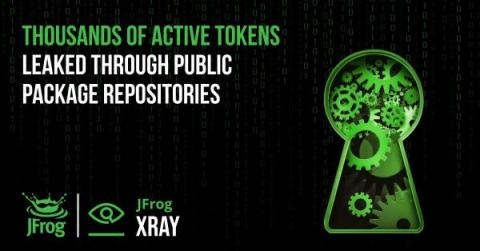Security | Threat Detection | Cyberattacks | DevSecOps | Compliance
Latest News
Announcing our $8M seed round
Our core mission at Bearer has always been focused on improving the developer experience. As we’ve evolved, that drive narrowed in on enabling development teams to strengthen their data security posture, while still maintaining the pace and agility needs of modern software. In an environment where data breaches and leaks are increasing rapidly year over year, it’s vitally important to detect sensitive data risks before they happen.
JFrog's Advanced Security Scanners Discovered Thousands of Publicly Exposed API Tokens - And They're Active
The JFrog Security Research team released the findings of a recent investigation wherein they uncovered thousands of publicly exposed, active API tokens. This was accomplished while the team tested the new Secrets Detection feature in the company’s JFrog Advanced Security solution, part of JFrog Xray.
How to make a mock API server in JavaScript
Developing and testing a frontend feature can be difficult, especially when the backend it depends on is not ready. This dependency on a backend API often slows down the development process. In scenarios like this, developing a mock API can save you a lot of time by allowing you to develop your feature independent of the backend, and make it easier to test and identify scenarios where your API might fail before it is ready.
Proactively reduce risks with Attack Surface Custom Policies
If you’re responsible for security, then you know how useful it is to have clearly-defined security policies that are simple to implement, scale, and verify. Product and AppSec teams know that great security policies empower teams to work autonomously so that work moves forward as it should. However, validating that your security policies are actually implemented is difficult.
Learnings from the Optus Breach
The 6 Biggest Challenges of REST API Testing
Securing REST APIs is particularly difficult since they are highly interconnected and not designed for manual access. To save time and be more efficient, many developers rely on testing solutions that can automatically detect REST API endpoints and test parameter properties within them. In this article, I want to provide an overview of the 6 biggest challenges of REST API security testing and how test automation can help resolve them.
What to Know about APIs, the "On-Ramps to the Digital World"
An application programming interface, or API, is a defined process that allows data to be shared between applications or programs. Each API consists of a set of rules that dictates how communication occurs between a client and a server or external program. The required request format, the authentication process, and the encryption of data all have set guidelines so that the API knows what information to share and when and how to share it.
How to Use MITRE ATT&CK to Mitigate API & Other Attacks?
With a threat landscape expanding at an accelerated pace, it is next to impossible for any organization to even keep track of and monitor the volume, frequency, complexity, and breadth of the attack techniques and tactics out there. But to effectively tackle threats and protect mission-critical assets, the knowledge of these common attack techniques, tactics, detection, and mitigation is critical. This is where MITRE ATT&CK is especially useful.










